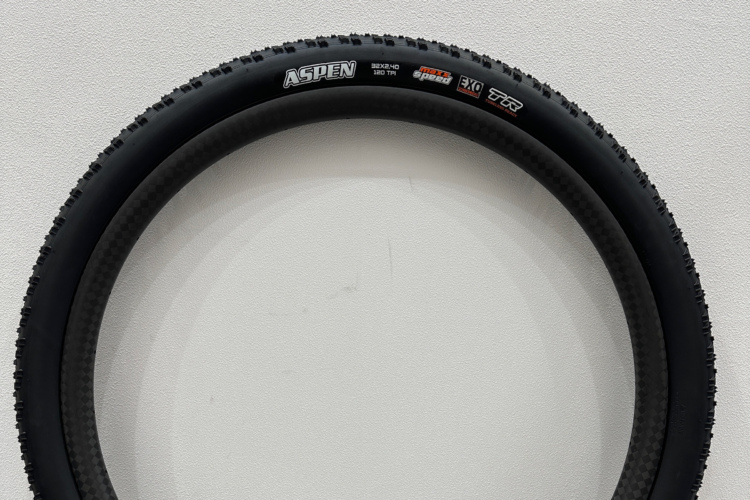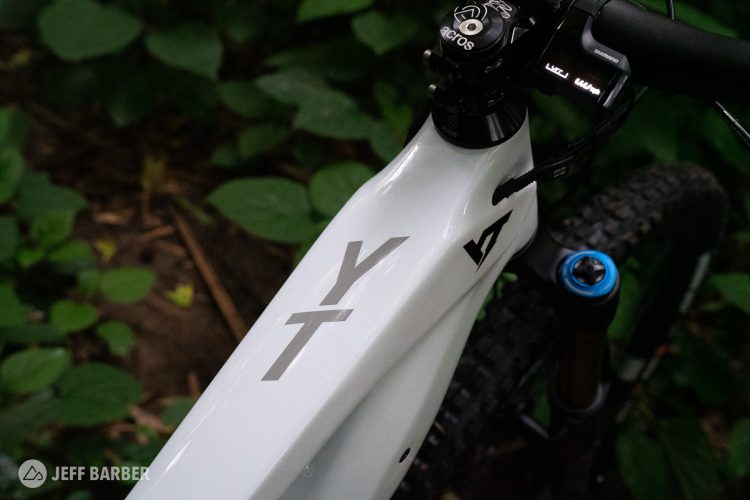
Those pants with the zip-off legs have become the butt of many jokes these days, but who could argue against their versatility? Sure, it’d be easier to decide on wearing one or the other on a given day, unless of course the weather is being fickle with quick transitions from cloudy to sunny.
Maybe there are riders stuck in a similar quandary. Some might prefer to climb in a half-shell and add a chin bar at the summit above, or maybe someone needs a helmet that can pull double duty in the bike park and on local trails; a quiver-killing helmet. In my experience, this type of helmet has come in handy when I am heading on a trip that involves both bike park riding and singletrack.

The double-duty Sweet Protection Arbitrator helmet has the brand’s STACC ventilation system for cooling, an Occigrip dial in the back to adjust the fit, a standard, hard plastic MIPS liner, and two retention systems: a snap buckle, and a ratchet strap. The helmet features a 4-piece shell construction, with a Polycarbonate outer shell with an EPS liner underneath, a carbon fiber chin guard, and two sets of pads, each with different thicknesses for an adjustable pad fit. The Arbitrator comes in two sizes, SM and ML. The retail price is $350 (available at Competitive Cyclist and other online retailers).
Arbitrator – On the trail

The Arbitrator is a sharp looking helmet. The visor is high and forward reaching, for styling in the front that reflects Guile’s profile, while the back quickly squares off and rounds a bit. There is a lot of venting but it is pretty subtle and each of the four colorways are fairly subdued, including the brighter blue and gold models. Some of the $350 price tag is reflected in the raw carbon appearance around the chin bar. I forgot to mention the weight, but it’s not the lightest at 1,025 total, 548g for the upper-half and 477g for the chin bar. For reference, the Super DH I tested weighed 880g, and Smith’s new Mainline full-face released last year weighs 800g.
Donning the helmet in its full-face mode is where I first felt challenged by the Arbitrator. The Occigrip dial extends forward quite a bit and doesn’t leave as much space as you’d usually find in a devoted full-face helmet. Though this is adjustable and can be moved up to make more room, it’s a bit of a chore to move the dial system up, put the helmet on, and then pull it down where I preferred to have the helmet for a deeper feeling fit. With the dial and adjustment system pulled down, putting the full-face helmet on is a really uncomfortable experience. The dial prods the back of your head and the bottom of the chin bar squeezes it from the sides.


With the full-face on my head, it’s actually pretty comfortable. When the dial and adjustment system is in place, it feels secure and stable, and the venting will keep most people happy on a descent. I can’t say I’m a fan of the dual retention system when the Arbitrator has arbitrated on its full face mode. Securing the helmet requires snapping the traditional buckle which is attached to the upper half, and then zipping the ratchet strip, which is attached to the lower half. The ratcheting buckle’s release feels far from intuitive, and I don’t understand why there needs to be a retainment system on both the upper and lower halves if the helmet is secure when it’s set up as a full-face. I will say that it’s quiet, worn as a full-face too, whereas the convertible Bell Super DH I’ve worn is creaky when it’s assembled.
The conversion process was a little mysterious at first too. Yes, I know all of those stereotypes about men and reading directions, but I feel like if I can’t look at a piece of equipment – like a convertible bike helmet – and figure out how to separate and join the halves without consulting documentation, then it could be made simpler. Most of my confusion came from the amount of force that is required from your thumb and forefinger to make the conversion. The little metal pieces are moving more freely now, but it’s a lot to ask of smaller digits. Slide the metal knob to the left to expose a red DANGER! dot, pull down the lever, and pull the helmet apart. It seems really simple, but it can take a minute.


The chin bar is cumbersome and could be tricky to stow inside a hydration pack. It might best be transported by strapping it to the outside of a pack or dangling from one side of the handlebars.
As a half-shell, the Arbitrator works fine. It vents reasonably well, and fits similarly to other Sweet Protection helmets like the Trailblazer that I’ve been wearing. The Arbitrator feels a little more “on the top” rather than “around the head,” at least for me, and it obviously weighs more. That heft does make it a safe-feeling helmet, especially since it’s a downhill-minded lid.
Closing thoughts

The Arbitrator is not my favorite helmet, despite having enjoyed other Sweet Protection helmets I’ve worn. The conversion process is a little funky, and donning the helmet in full-face mode isn’t comfortable. As a half-shelf or even worn as a full-face, the helmet works just fine, however, and if you don’t mind a time-consuming conversion, then most people will find that the Arbitrator works great as a convertible helmet.
- Price: $350
- Available at Competitive Cyclist and other online retailers.
Check out our mountain bike helmet buyers guide and our picks for the best mountain bike helmets.










0 Comments